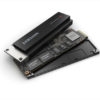The clues were there at WWDC 2021 as to Apple’s next big thing. Apple has been laying the groundwork for it for years, and I’d say that by this time next year, it’ll be here.
No, it not a car, and certainly not a TV.
AR glasses.
Must read: I just found my lost AirTag… you’ll never guess where it went
And a lot of the pieces are already in place for this.
For example, take Live Text in photos, with its associated visual look-up feature.
Having the ability to pull text from real-world scenes and pull up data on what the user is looking at would be a cornerstone feature of any AR glasses.
Imagine looking at a shop and getting opening hours, live train times when at the station, or product information when looking at a box or barcode. Rather than having to pull out a camera, the camera (and presumably a LiDAR scanner — would be scanning the scene constantly.
Another cornerstone of any face wearable would be mapping, and iOS 15 introduces AR to Maps.
Rolling out this year to selected cities, users will be able to hold up their iPhone, scan the buildings in the vicinity, and then get AR directions to their destination.
Sounds interesting on the iPhone — Google Maps has something similar that can precisely determine where you are based on the buildings around you — but that’s nothing compared to the same tech built into AR glasses.
Then there are the little things like voice search for Safari and bringing more of the Siri workload onto the device rather than offloading it to the cloud. Again, where a keyboard isn’t going to be an option — or the rudimentary input systems used on the Apple Watch — voice is going to be the primary input mechanism for any glasses wearable.
At this point, App Clips — tiny apps that are quickly downloaded and installed, and which offer a more basic set of features compared to full apps — become super useful. You don’t want your vision filled with apps, but being able to download a menu at a restaurant or a timetable at a train station would be helpful.
Apps then become on-demand
I see special audio as another part of the AR glasses, a way to make digital information feel as natural as the real world. Whether the AR glasses would feature earphones, or users would have to supply their own AirPods — I’m guessing the latter because, well, money — this has the potential to make AR glasses truly immersive.
I could even see wallet and keys being part of the AR package. Because why not? The best way to make a wearable a success is to get people to wear it as much as possible.
One question will be whether Apple can get over the privacy hurdles. Not user privacy, but those in the firing line of the cameras. This part of what sunk Google Glass in the consumer space, so it will be interesting to see how Apple navigates it.
That said, Apple has a calming effect on the masses — I’ve noticed a huge decrease in the 5G death beams lunacy now that new iPhones have 5G.
Maybe Apple can do the same for smart glasses.



